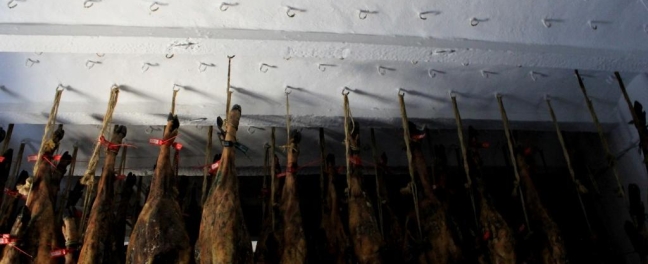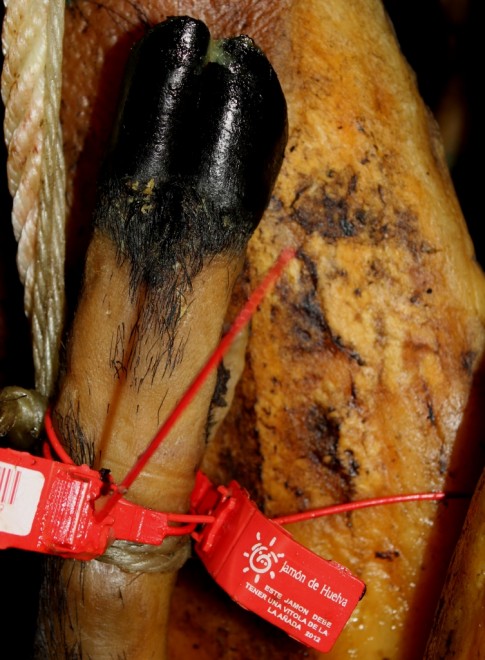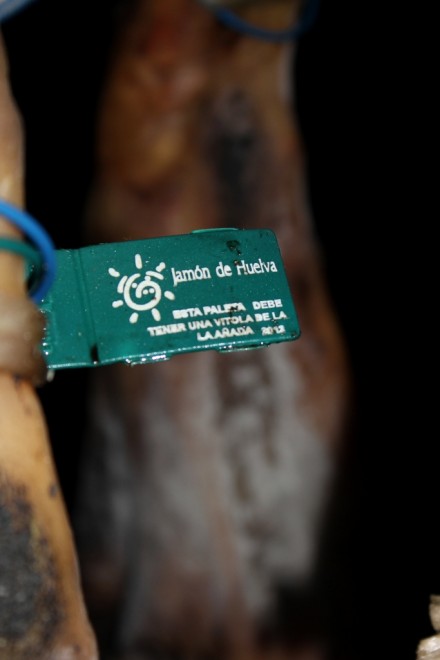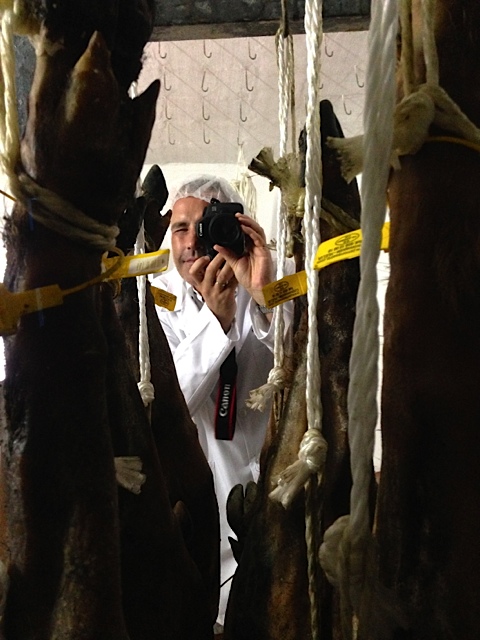Jabugo, a village in the Aracena Mountains in Huelva province is at the centre of a multi-million euro industry – ham production. Now this is not just any ham, this is ‘pata negra’, the black hoof jamón from Iberian black acorn-fed pigs that is salted and cured over many months. It’s the ham that ‘foodies’ from across the world love to eat.
Yes, I know it’s very fashionable now to talk about local gourmet produce, but here in Southern Spain, despite the clichés it’s really a way of life. Here there is no need to visit a fancy city delicatessen, or up-market supermarket to find real food; after all, so much artisan food comes from the Andalusian countryside. But you have to search a little.
In Spain, jamón is like olive oil; it’s pretty much everywhere, but the quality can vary hugely. Yet as with all foods, once you’ve tried the gourmet artisan version it is hard to go back. Just as with a handmade English Cheddar from Somerset, there is no comparison between the real artisan cheese made in its original locality and the mass produced factory-style product that tries to take its name.
Since this is true of so many foods now, artisans are trying to protect their unique product. So, for example, coming back to ham, to protect consumers and the industry, genuine ‘pata negra’ hams are certified with ‘Denominación de Origen’, much like wine. South west Spain is probably the best known region for ham; and Huelva ham is considered amongst the very best of the best. With its unique mountain climate and vast oak forests, the pure breed, black ‘Ibérico’ pigs are able to be reared free-range, roaming amongst the oaks, feeding on acorns (‘bellota’), from now until the Spring.
Whilst staying at ‘La Casa Noble’ I was eager to get the low-down on fancy gourmet ham, Luckily Melanie, the owner of La Casa Noble arranged for us to visit a local producer, Jamones Eíriz that provide small tours of their estate, showing visitors how artisan hams are produced.
We were privileged to have a private tour with one of the co-owners, Josefa Eiriz Martin.
It was an extraordinary experience! First we went to see some of the black pigs, the ‘Ibericos’ that need over a hectare of oak forest for each of them. Between now and February, these beasts can eat up to 8 kilos of acorns a day! Their diet is also supplemented by some maize, but in order to gain full accreditation as a ‘pata negra’ POD ham, the pigs must be roaming free in oak forests and eating predominantly acorns.
The farmers use long poles to dislodge the acorns, so they fall to the ground. This is done in different areas of the large forests, so the pigs have to get some exercise in search of their favourite treat!
This part of south west Spain has a unique climate, where the Atlantic and Mediterranean meet. The vast oak forests are only part of the story, the special levels of humidity are also important not just for healthy animals but for effective drying of the hams.
The pigs are slaughtered around February – when typically they will have doubled in size from how they look in these photos. The balance of diet and exercise will have balanced the amount of flavourful fat with the meat.
Due to government regulations, sadly the animals now have to travel to a off-site slaughter-house, as local farmers can longer slaughter on their own farms.
The meat is returned, and the shoulders and legs are carefully prepared for drying, going through various drying rooms over many months.
Eiriz also make artisan sausages in the traditional way, with secret marinade – using the intestine that is knotted.
It’s a fascinating tour and helps reconnect you with food and where it comes from. It’s also heartening to see that there is a market for these gourmet foods, keeping alive traditions, maintaining employment in the rural areas, as well as maintaining the oak forest and the stunning look of the countryside here – it’s all inter-connected.



































I can’t wait for the ham fair to start this weekend – I go every year!
You’re so lucky – I’m not going to make i this year. Have fun and eat well 🙂
It really is an amazing artisan product, perfected over centuries by this family in what continues to be a passion . . . not just what they do – but what they eat sleep and breath also. I am glad you enjoyed it as much as I always do.
We had a great time and it was really fascinating.
My head and tummy are buzzing about as I am reading this; how I so miss Andalucía and the ability to have bellota whenever. Thank you for taking me on the tour with you.
Yes, the jamon is delicious! And resonably priced compared to export prices. Thanks for following my blog.